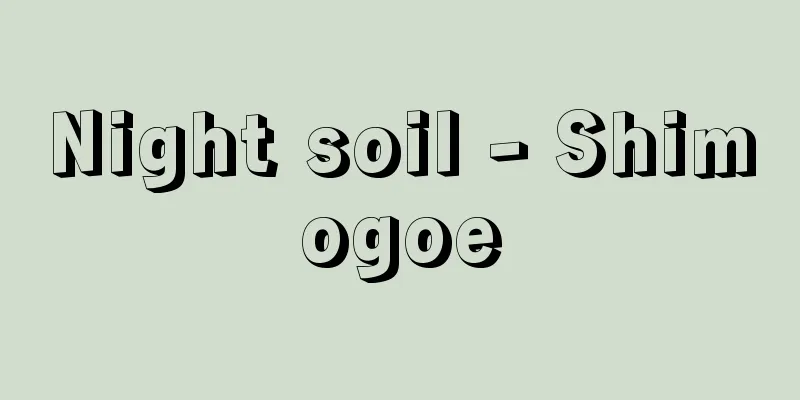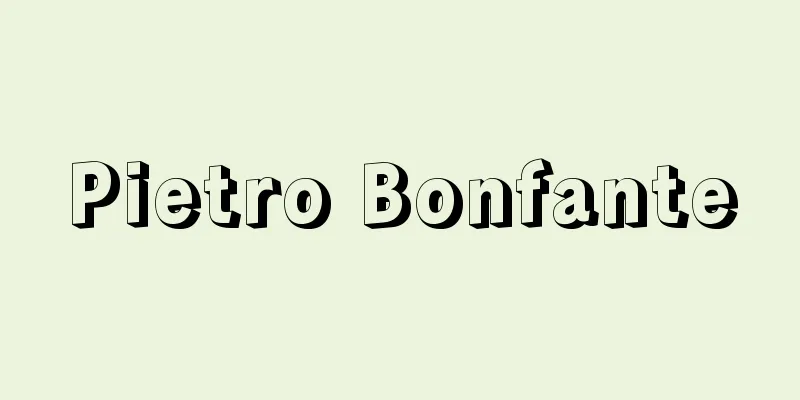Night soil - Shimogoe

|
Human feces and urine are composted and have been widely used in Japan since the Edo period. They were an important nitrogen fertilizer, especially around the time of World War II, when fast-acting fertilizers were scarce. However, with the spread of chemical fertilizers, they are rarely used in urban areas, let alone rural areas, and waste disposal has become a problem. Currently, they are used as sludge from sewage treatment systems, and some of them are used as fertilizer. The composition of the ingredients in night soil varies depending on race, age, and whether one lives in an urban or rural area, but it contains about 0.5-0.7% nitrogen, 0.1-0.2% phosphoric acid, and 0.2-0.3% potassium, as well as about 1% salt, small amounts of lime, magnesium oxide, and silicic acid. Night soil is stored and composted for 1-2 weeks in the hot summer months and 3-4 weeks in the cold winter months, and then diluted 2-3 times and applied. In the past, in vegetable fields near large cities such as Tokyo and Osaka, the soil became acidic due to the continuous use of night soil, which caused growth problems. This is caused by the action of salt contained in the night soil. [Yuki Koyama] "How to Make and Distribute Self-Supplied Compost, Green Manure, and Night Soil by Nobuo Nozaki (1946, Endo Shoten)" ▽ "Landscapes of the History of Edo" edited by Takashi Kato (1999, Yamakawa Publishing) ▽ "Folklore of Toilets and Excretion" edited by Zenji Tsutsumigawa (2003, Hihyosha)" [Reference item] |Source: Shogakukan Encyclopedia Nipponica About Encyclopedia Nipponica Information | Legend |
|
人糞尿(じんぷんにょう)を腐熟させたもので、日本では江戸時代以降よく使われるようになり、とくに速効性肥料の乏しかった第二次世界大戦のころには重要な窒素肥料であった。しかし化学肥料の普及により、都市部はいうに及ばず農村においてもほとんど使用されず、廃棄処理に苦労するようになった。現在は下水処理システムから生ずる汚泥となり、その一部が肥料として施用されている。下肥中の成分組成は人種、年齢または都市・農村居住者などの違いによって異なるが、窒素0.5~0.7%、リン酸0.1~0.2%、カリ(カリウム)0.2~0.3%程度を含み、このほか約1%の食塩、少量の石灰、苦土(酸化マグネシウム)、ケイ酸を含んでいる。夏の高温時で1~2週間、冬の低温時で3~4週間貯蔵腐熟させたのち、2、3倍に薄めて施用する。かつて東京、大阪などの大都市近郊の野菜畑では、下肥の連用によって土壌が酸性となり、生育障害の発生がみられた。これは、下肥中に含まれる食塩の作用によっておこるものである。 [小山雄生] 『野崎信夫著『自給肥料堆肥・緑肥・下肥の作り方と与へ方』(1946・遠藤書店)』▽『加藤貴編『大江戸歴史の風景』(1999・山川出版社)』▽『礫川全次編『厠と排泄の民俗学』(2003・批評社)』 [参照項目] |出典 小学館 日本大百科全書(ニッポニカ)日本大百科全書(ニッポニカ)について 情報 | 凡例 |
<<: Shimokoshiki [village] - Shimokoshiki
Recommend
Abortion on business - Gyomujoudatai
...If the fetus that has been expelled from the m...
Monteux
A French-born American conductor. He studied violi...
Conventionalism - English spelling: conventionalism
It is also called "conventionalism," &qu...
Seven nights - Shichiya
Celebration on the seventh day after birth. Even ...
Imitation mirror - bouseikyou
This refers to bronze mirrors that are imitations...
Central Park
A park in New York City, USA. It has an area of ...
Muff - Mafu (English spelling) muff
A tubular object used mainly by women to keep the...
Kamae (Noh)
…Table 2 shows an example of a unit of gestures, ...
Symbolism (English spelling) symbolisme French
Symbolism. In the narrow sense, it was a literary...
Buckingham Palace - Buckingham Palace
The palace of the British royal family in Westmin...
Board painting - Itae
An ancient art term used mainly in Japanese and C...
Henry II Pottery
...In the 17th and 18th centuries, furniture made...
Coordinated water - Haisui (English spelling)
In the narrow sense, it refers to the water of cry...
Denzo Inoue - Denzo Inoue
A Meiji era liberal and civil rights activist. A ...
Correct name - Seimei (English spelling) zhèng míng
An ancient Chinese concept of right and wrong. In ...









